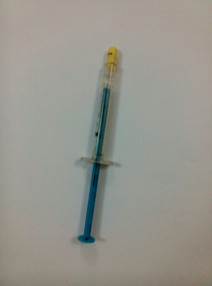Formulation and evaluation of capsules and suppositories containing Gongrenema Latifolium
Keywords:
Capsules, Suppositories, Gongronema latifolium, Anti-diabetic, C-peptideAbstract
Introduction: Earlier studies have been done on Gongronema latifolium (GL) for anti-diabetic effect using animal model. However, the extracts have bitter taste. This study focused on the formulation and evaluation of solid dosage forms namely capsules and suppositories.
Method: Purified GL were used in formulation of capsules and suppositories.The capsules were evaluated for various physico-chemical properties such as weight uniformity, disintegration time and dissolution test. Physical properties of suppositories were also assessed. Investigation on anti-diabetic effects of capsules and suppositories of purifified Gongronema latifolium on Streptozotocin-induced diabetic rats was carried out.
Results: Weight uniformity tests of the capsules showed percentage deviation of less than 10%. Disintegration of the capsules was within 2 min. Drug release profile showed that peak drug release occurred at 12 min. Physical properties of suppositories were satisfactory. The antidiabetic effect of capsules was 52+ 11.82 %. C-peptide (pM) of GL purifified capsules was 115.76 +1.54 respectively. Blood glucose of diabetic guinea pig was not significantly reduced when varying concentrations of GL suppositories were administered.
Conclusion: Capsules and suppositories passed compendia requirements, while purifified Gongronema latifolium capsules demonstrated signifificant anti-diabetic activities unlike the suppositories. Suppository is not an ideal dosage form for Gongronema latifolium anti-diabetic herb.
References
Edim EH, Egomi GU, Ekpo UF and Archibong OE (2012). A review on Gongronema latifolium, (Utasi) A novel antibiotic against Staphylococcus aureus related infections. International Journal of Biochemistry and Biotechnology 1(8), 204-208.
Udoh VF, Eshiet GA, Akpan JO and Edu FE (2013). Hypoglycemic Effect of Gongronema latifolium Extracts in Rats. Journal of natural Sciences Research 3(5). http//www.iiste.org
Ugochukwu NH, Babady NE, Cobourne M and Gasset SR (2003). The effect of Gongronema latifolium extracts on serum lipid profile and oxidative stress in hepatocytes of diabetic rats. Journal of Biosci. 28 (1), 1 - 5. https://doi.org/:10.1007//bf02970124
Morebise O (2015). A review on Gongrenema Latifolium, an extremely useful plant with great prospects. European Journal of Medicinal plants 10 (1) 1 - 9 . https://doi.org/:10.7734/EJMP/201519713
Jerald EE, Joshi SB and Jain DC (2008). Antidiabetic activity of flower buds of Michehia champaca (Linn). Indian J. Pharmacol. 64: 510 – 571. https://doi.org/:10.4103/0253-7613.45151
WHO (2011) “Diabetes Programme.” World Health Organization.
WHO (1993). WHO Regional office for the Western Pacific Research Guidelines on evaluating the safety and efficacy of herbal medicines.
Trease and Evans (1996). Trease and Evans Pharmacognosy (15th. ed). W.B. Saunders Company, UK. p. 41, 191, 491 – 20.
U S Pharmacopoeia (2009). United State Pharmacist' Pharmacopeia. 1100-1105, 1108, 1096-1099.
Talman FA (1977). Tablets and Capsules. In: Bentley's Textbook of Pharmaceutics, Rawlins EA (Ed) 8th ed. East Sussex, Baillier Tindall. pp 313-314.
Akah PA, Uzodinma OA and Okolo CE (2011). Antidiabetic activity of aqueous and methanol extract and fractions of Gongronema latifolium (Asclepidaceae) leaves in alloxan Diabetic Rats, Journal of Applied Pharmaceutical Sciences
(09), 99-102.
Balogun ME, Besong EE, Obimma JN et al. (2016). Gongrenema Latifolium; A phytochemical Nutrition and Pharmacology, Review. Journal of Physiology and Pharmacology Advances 6(1)1.
https://doi.org/10.5455/JPPA.1969123104000
Frode and Medeiros (2008). Animal models to test drugs with potential antidiabetic activity. Journal of Ethnopharmacology 115: 173-183. https://doi.org/10.1016/j.jep.2007.10.038
Katherine Mand Laura RM (2009). Streptozotocin, Type 1 diabetes mellitus and Bone. Biological Procedures 11, 296 - 315. https://doi.org/10.1007/s12575-009-
Aulton ME (2013). Powder flow. In: Aulton's Pharmaceutics, the Design and Manufacture of Medicines, Aulton ME and Taylor KMG (eds) 4th Edition, London, Churchill Livingstone. pp 187 – 198.
Kohli DPS and Shah DH (2011). Drug Formulations Manual, New Delhi, Business Horizons 387.
Akpaso MI, Atangwho IJ, Akpantah A, Fischer VA, Igiri AO and Ebong PE (2011). Effect of combined leaf extracts of Vernonia amygdalina (Bitter leaf) and Gongronema latifolium (Utazi) on the pancreatic- β Cells of treptozotocininduzed Diabetic Rats, British. Journal of Advances in Medicine and Medical Research (1), 24 - 34.
https//doi.org/;10.9734/BJMMR/2011/215.
Karmel A (2010) Is insulin enough? Developing C-peptide therapy. Featured science. http://asweetlife.org/tag/c-peptide. Assessed on 23/3/2021

Views | PDF Downloads:
613
/ 302
/ 0
Published
How to Cite
Issue
Section
License

This work is licensed under a Creative Commons Attribution-NonCommercial 4.0 International License.


